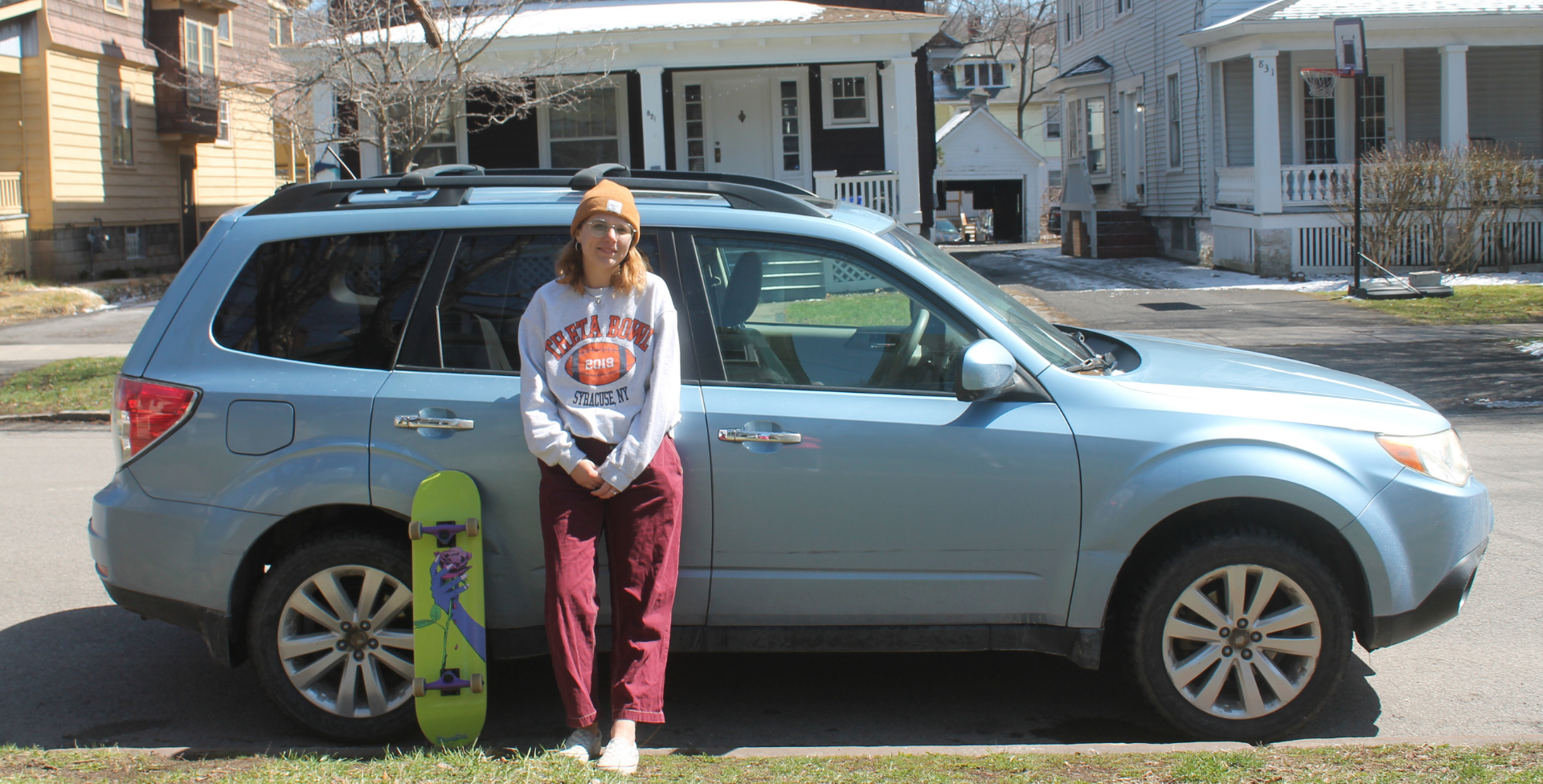

I always feel as if I’m forgetting something.
Once, during a tearful, fall-semester goodbye as I haphazardly packed the car for my journey from rural Vermont to Syracuse, N.Y. my mom attempted to reassure me. “I can always just mail your things to you, you know,” she said. “It wouldn’t take so long.”
I rolled my eyes, and the tears they’d been hoarding began to spill out over my cheeks.
“It’s not about that,” I said.
Indeed, it’s not the forgetting but the leaving that hurts, the saying of goodbyes and the distant waves to a time that I won’t get back. Transitions instill the most fear. Leaving for school, packing my possessions, laying my room bare (even my bed frame is stripped), and embarking on a track to somewhere else created anxieties. Things could happen along the way, I would think, and I can’t just run home to my childhood bedroom if I forget something, which I always feel is the case.
Three years after that teary goodbye, I started to pack for the reverse of the same journey, traveling from Syracuse back home to Vermont. The dark began to lift outside, and the first notes of birdsong took shape in the air. The porches on Livingston Avenue, my home in this final year of college, are empty at this early hour. I’ve grown accustomed to feeling like the first one to wake and enjoy the solitude that lacks any tinge of loneliness.
I always enjoyed what I came to call “wonders” along these stretches. What made them feel so wondrous was the way they just appeared on the landscape.
I paused and thought about the rituals of this house. As the day broke into bigger pieces, faces began to appear. Someone logged in to a Zoom class on the lawn. Another skateboarded off to class down the pitted pavement. The house began to wake as people exited their bedrooms and headed for the kitchen or walked back to their own home. Later, someone would push the standing basketball net into the street, and another would begin to draw with sidewalk chalk. People would come, friends I’ve made at school and in the community. On any given day this year, I would join them. But today, I packed up early for the road. This time, spring semester, senior year, served as the last time I would drive between school and home.
I wanted to feel brave, but I felt as if I’m forgetting something.
I-690 East onto NY-365, through the scenic Adirondack byway and finally, over the Lake Champlain Bridge takes me home to Addison County, Vermont. It’s not the only way to get back to where I’m from. In fact, my route often confused high-school friends who migrated to Upstate New York to study. When friends accompanied me home, they often laughed, asking, “Where are we?” Why wouldn’t I take the highway for 150 miles, an easy, no muss route with service, rest stops along the way? Get there as quickly as possible?
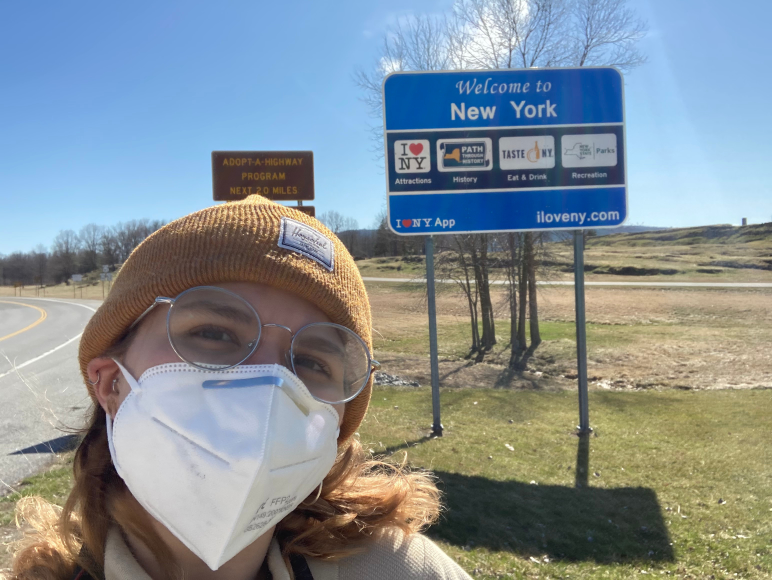
Taking a selfie with the Welcome to New York sign, just a few miles over the bridge from the sign welcoming visitors to Vermont. Photo by Hattie Lindert.
Good reasons existed for this route. The terror I experienced driving on the highway prompted my preference for the scenic route. Born and raised on dusty, pitted back roads in the Green Mountains, I felt unnerved by the lanes of traffic and the sensation of being surrounded by other vehicles. From the moment I earned my license at 16, I lived for driving nowhere through the empty straightaways in Vermont, music pounding, the Adirondacks rising over the invisible lake separating New York and Vermont like a beacon.
When I committed to Syracuse University, the thought of making the commute, crossing that lake, triggered deep anxiety even though the first few months of college brought a palpable pining for home. When I got lonely freshman year, the view out of my window hurt the most — the bare cement roof of Graham Dining Hall offered no trees. I longed for the scent of the forest or the brush of pine needles whipping in the wind and would try to recreate peaceful moments from home by looking at the right thing at the right time, listening to the right music. And when I finally drove myself home for the first time and reached the scenic part of the drive, it felt like relief. Finally, away from the city, I would laugh to myself, knowing just how un-city-like many of my friends found SU.
The fear of highway driving fit in well to my fear of change of transitions. Leaving meant when I returned, things would feel different. My loved ones changed and me as well. The highway scared me because once I was on, it would be that much harder to turn back. And even though fear started the scenic route, as I returned again and again to college, richer in experience and memory and community, it began to offer a moment of meditation and served as a reminder that life moved as it should.
The byway consists primarily of the long, winding Route 8 and straightaway NY-365. As I drove, multiple lanes compressed, billboards fell away, and the sun began to cast glimmers through thick canopies of forest. I pulled off the I-90 for the first time in Verona, and I finally felt as if my drive was beginning. The first 30 miles, one of the only two brief stretches of the journey on a multi-lane route felt like a warm up. Those miles provide me time to transition, to drink my coffee, make sure I didn’t forget anything even though I know I won’t turn back, accept the fact that I’m leaving somewhere. I focused on the road and dropped the urge to continue glancing back at the Syracuse skyline.
These landmarks helped me refuse Point A to Point B. They allowed me to ignore the stress of the eventual destination, the “what will happen when I get there?”
Back in Verona, the road narrowed and deer crossings began to replace ‘No U Turn’ signs. I can begin to reflect. At a pull-off perched at the edge of a river, I take a moment to read what I wrote in my journal before I left:
How will I feel when I cross that bridge? Will I know it’s the last time? Sometimes I know things, but also I feel like I don’t KNOW them.
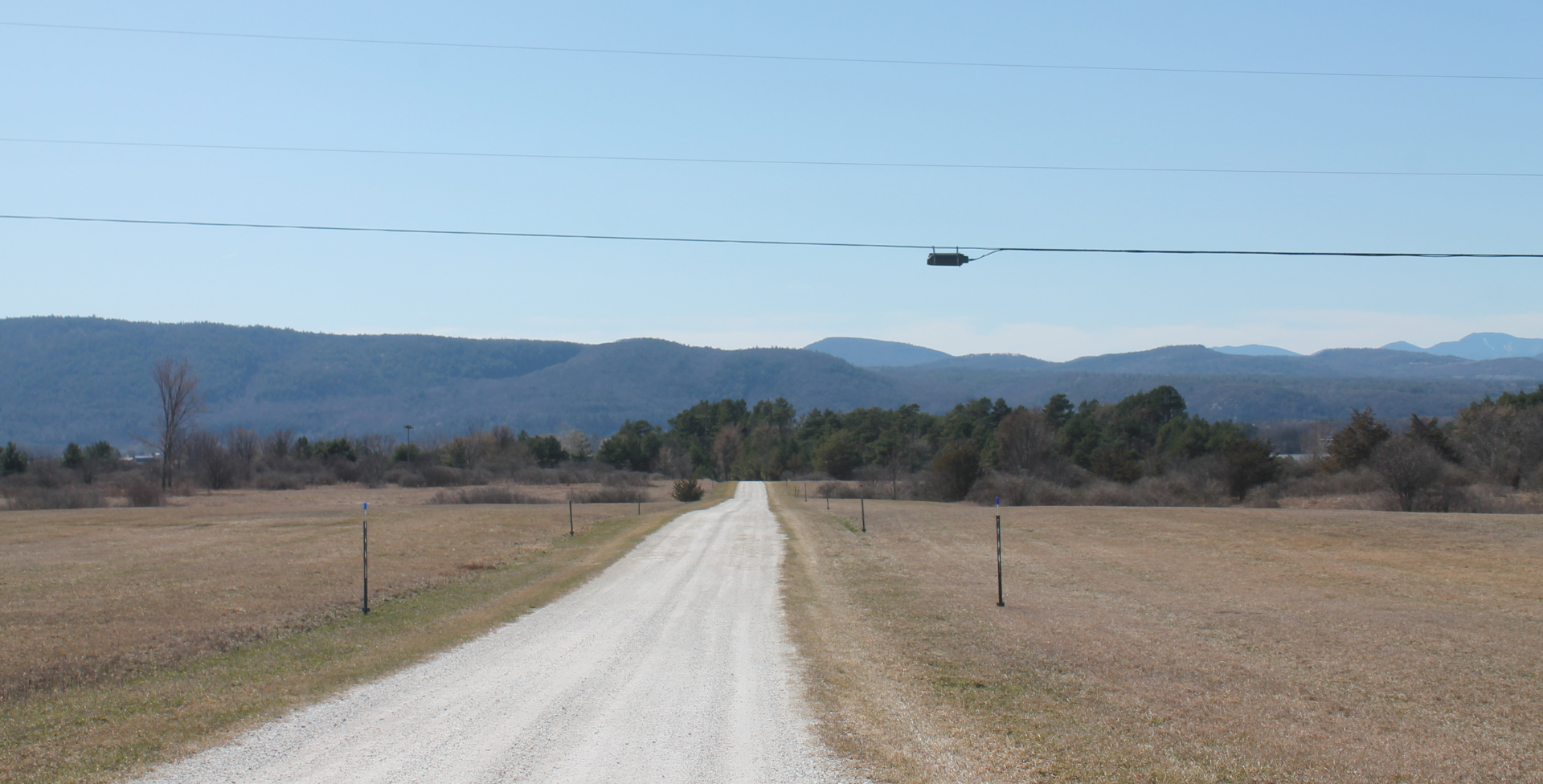
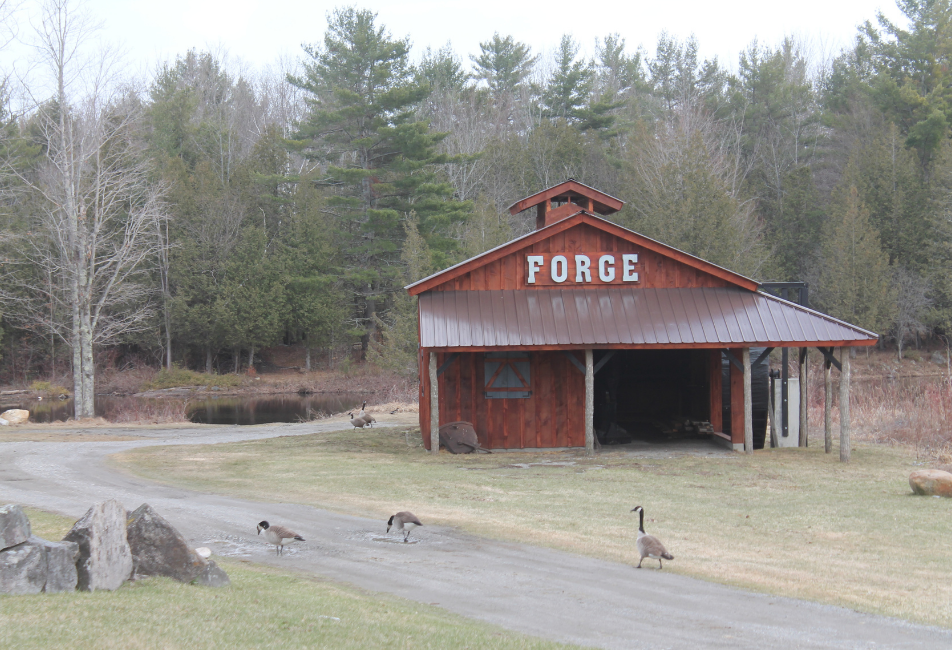
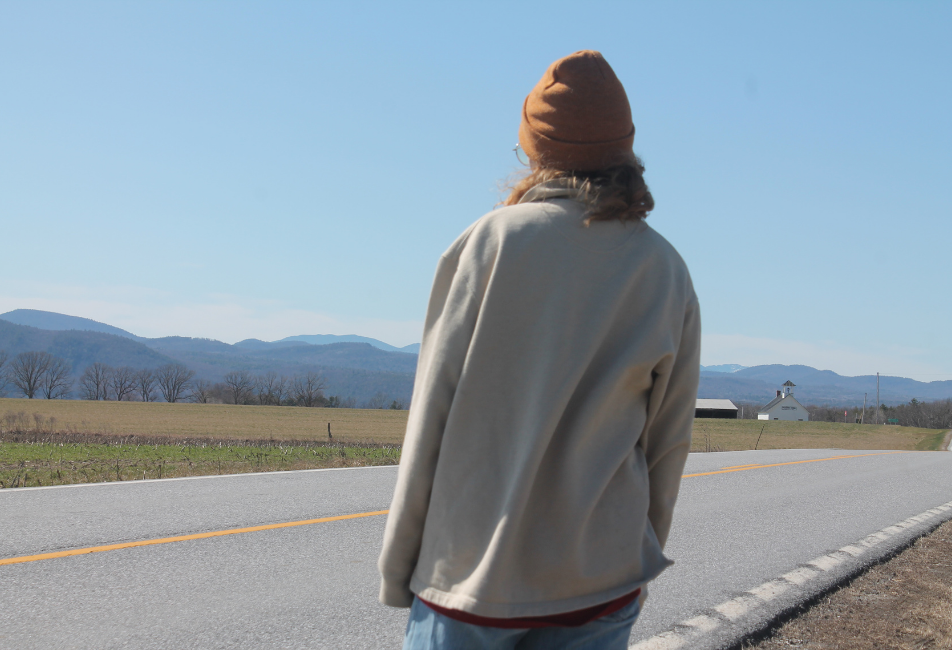
Looking out over the Adirondack mountains from Vermont RT 30. The road is separated between the states of Vermont and New York by Lake Champlain. Photo by Hattie Lindert.
One thing I do know that I know is how it has felt crossing that bridge, either way: redemptive, cathartic. Movement from one time to the next. Like flying.
I’ve made bigger, more frightening exits before. As my friends and I said goodbye to each other in the fall of 2019, headed into a new decade and semesters around the world, the precarity of our connections felt palpable. I mourned the loss of whatever semester could have existed in Syracuse for me, what could have been. I remember holding my friend who was about to go to Spain, not wanting to let go. I both reveled in and resented that I found myself heartbroken to leave the life I’d built at school, not the one I feared losing at home. As I contemplated a semester in Chile, the enormity of an ocean and expensive flight (not a car trip), away from the people closest to me, reinforced the flexibility of my community in both Vermont and Syracuse. My best friend had visited me in Vermont and seen my life there; my high school friends had come to visit me and drank away hours in my college bars. They were now ingrained in both places, connected physically by that byway. Though none of us could have predicted the ways in which our lives, relationships, and ability to connect would change over the next year, the possibilities felt bottomless – hurtling through the air to an unknown, as opposed to driving meditatively between two familiar spaces.
As I moved beyond the frightened Vermont girl too scared to merge onto the highway, I embraced the markers driving back toward New York and the excitement they sparked in me. The familiar rattle of my tires on the cracked asphalt, alien pink-and-purple sunsets over the Carrier Dome parking highway exit, the spire of the water tower piercing the sky, and the ever-luminescent graffitied “I U CAROL” emblazoned on the water tower that always reminded me of my grandmother.
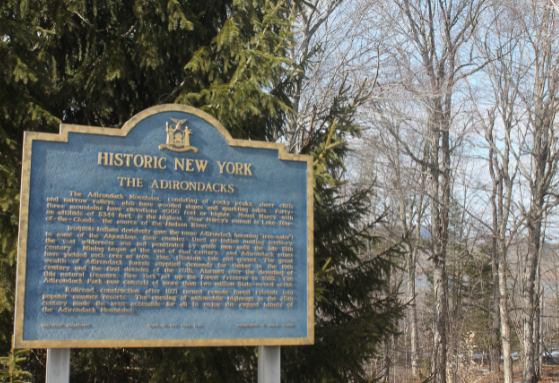
A plaque off New York Route 30 details some of the history of the Adirondacks, ancestral lands of the Iroquois confederacy. Photo by Hattie Lindert.
I welcomed seeing the Manley South parking lot where I parked my car in the days of those tearful goodbyes, dreading Syracuse and everything it meant. Occasionally I sat there to cry when I did not want to go all the way back to school, and once I found myself there at 6 a.m. on a Thursday, panicked and desperate, knowing nothing but that I needed to drive home to the trees. I remembered seeing the LED lights flashing from a dorm room that used to be mine, inhabited by someone new. And that I wrote my initials in the desk drawer before I left it. I wonder if the new occupant ever noticed.
And I imagined that the lines of connection are everywhere, as physically palpable as the blurred-together trees lining RT 30.
I looked forward to the long stretches the most, the ones when the graphic on my iphone’s GPS shimmered and shifted into a long, straight blue line extending endlessly, which always made me feel like Harold and the Purple Crayon.
I always enjoyed what I came to call “wonders” along these stretches. What made them feel so wondrous was the way they just appeared on the landscape. The village green in Holland Patent, where a bell-shaped gazebo shaded by a tall oak tree made me imagine a secret romance lived long ago. The Hinckley Reservoir Dam, where, if I drove by at just the right time, water cascaded in plumes of white into the river. A line of geese shimmering in lake water hovered above Lake Pleasant. The tiny dirt road pull-off that revealed Piseco Lake, rendered invisible by the highway, just beginning to thaw in the sunshine. The carved wooden sign alerting drivers we’re entering Adirondack Park. Gunnison’s Apple Orchard. Norm’s Bait and Tackle where a rainbow flag flew over a dilapidated buggy that’s been parked there since the first time I took this drive. The sign in Ironville, N.Y. that always captured my attention, urging one to “Please Come Back Soon.”
These landmarks helped me refuse Point A to Point B. They allowed me to ignore the stress of the eventual destination, the “what will happen when I get there?” and provided moments to hold my attention along the way. The drive allowed me to draw a connection between those points, to be Harold with his purple crayon, and to remind myself that life and love and wonder exist all along the way in that natural environment. For every mile I drove away from a place that I love, I came upon a family playing on a swing set in their front yard, a flock of Canada Geese touching down upon still water, and lives not much unlike my own, who touched down and found home along the road, as we all do.
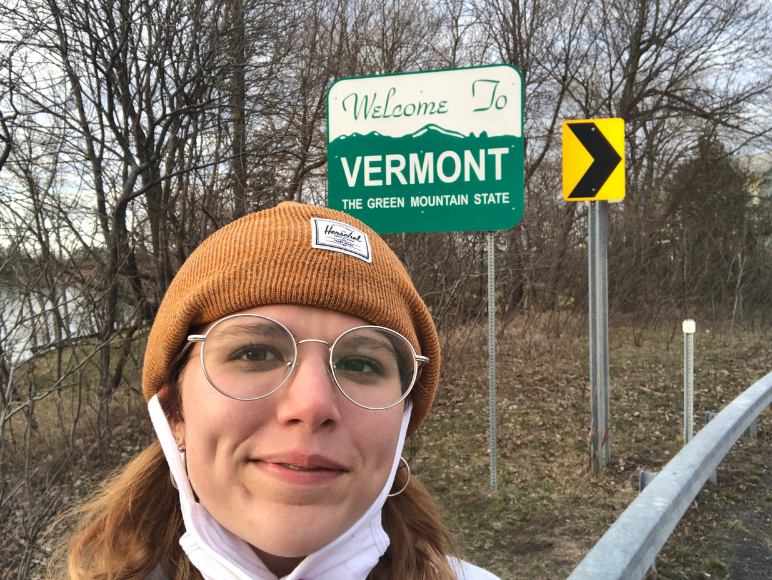
Taking a selfie with the Welcome to Vermont sign. Photo by Hattie Lindert.
As I made the drive out of Vermont again, I stopped to take a photo of myself with the mountains behind me. The lemon bars my mom sent home for my roommates sat perched in the passenger seat by my notebook. I wanted to try and photograph everything, but I couldn't. I wanted the feeling of looking out onto a great unknown range of wild, one that used to swallow me up, but these days ushered me through yet another transition, a warm hand on my shoulder. I looked forward to the feeling of losing service, cruising deeper into the mountains, but remembering the comfort in reminding myself that I know all the lakes here — which is Lake Pleasant, which is the Speculator River Walk, which is Eagle Lake. That reminded me; I swore I saw an eagle there a year or two ago.
As I continued to work on my mountain selfie, a blue coup with an older couple pulled over to me. The day was brilliant, and the metal of their bumper gleamed against the windswept grass.
“We just wanted to make sure you were O.K.!” the driver called, a trucker’s hat perched atop his head. “We thought there might be something wrong with your motor.”
They exemplified Vermont neighbourliness, perhaps our proudest trait.
“It’s going just fine,” I said. “I was just having a moment with the mountains.”
They both smiled at me and waved as they pulled away. I know they knew what I meant, I think, as I saw them return to the road.
As I pulled over the bridge for the last time, I didn't play a song. I wanted to remember what this moment sounded like, the air whooshing through the open windows, railings of the Lake Champlain Bridge blending into an intricate pattern overhead. And always, birds calling and circling over the still lake, in the final stages of dethawing.
I pulled off again to take a picture at the Welcome to New York sign. Parked next to me sat an older man in a black skully cap and shades, adjusting the mirror on his blue BMW 1150 motorcycle. Both in our masks, he called to me, “Abby!” He had mistaken me for someone else.
He reminded me of the bikers who frequented the restaurant I worked through all through college, pre-pandemic — Two Brothers Tavern, located off of one of Vermont's idyllic scenic byways, Route 7. The bikers I served there on sunny, popular days drove from New York, across the bridge and down through the backroads, taking over and over again the same route I traveled. When they arrived at the restaurant for a burger and beer, their eyes would be happy and tired. They’d crumble into chairs, and their laughs filled up the room. Then, they’d reshoulder their leather jackets and head back out to make the bridge crossing again, just in time for sunset.
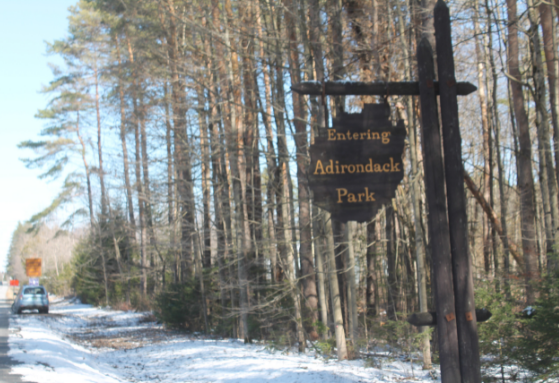
Entering Adirondack Park on the way home; the same sign welcomes you on the Vermont side of the park as well. Photo by Hattie Lindert.
Then the biker realized his mistake: “Oh, I’m sorry, you’re not Abby! I thought maybe I knew you.”
I laughed. Again, Vermont neighbourliness, I thought, but I didn’t know where he was from.
“No worries,” I said. “It’s such a beautiful day for a drive.”
He gave that same reassuring smile I saw on the couple, if only with his eyes.
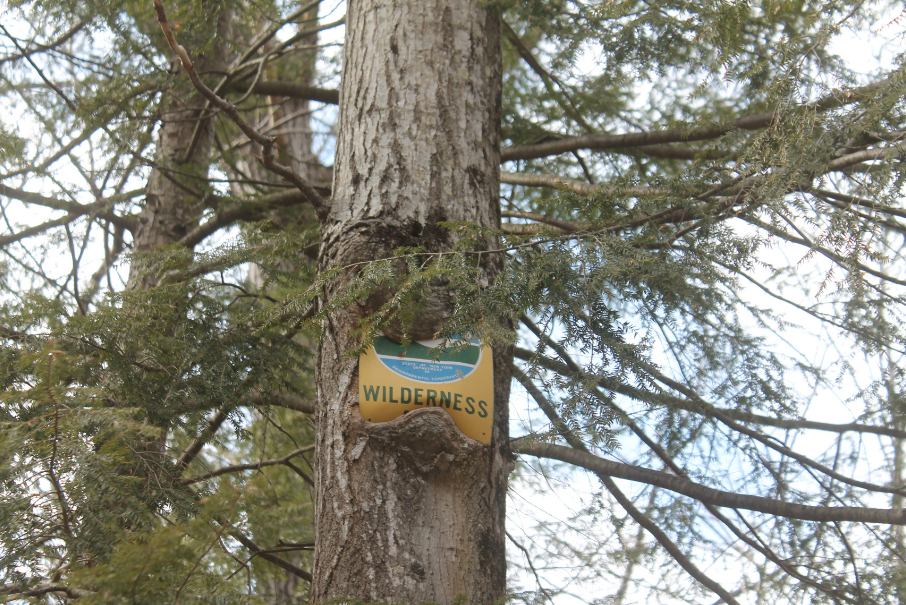
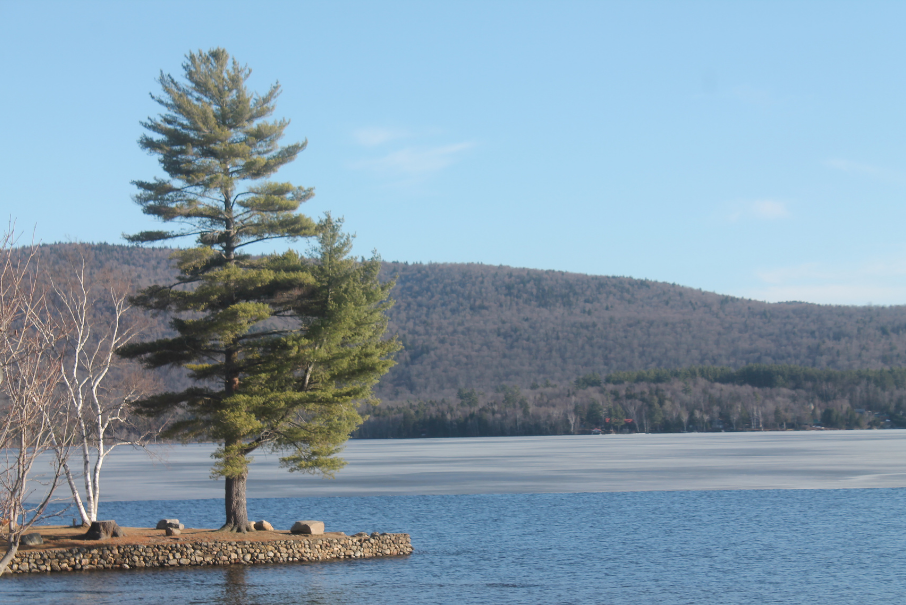
An overgrown marker signals a New York State Wilderness Area at a pull-off near Ironville, New York. A pine tree sustains the wind and basks in the sun on Lake Pleasant, off New York RT 30. Photo by Hattie Lindert.
“Ain’t we lucky?” he said, and headed toward the information center nearby.
In that moment, I thought of how alike he and I were. Driving over the bridge on a sunny day, between two places of equal beauty and love. With the sun out like this, I thought, I’ll make it into Syracuse just before sunset. My roommates likely would be on the porch. The neighbors will be playing basketball. My best friend next door will sit out on her roof, listening to Steely Dan or The Eagles, beckoning me to join for the best sunset view.
I wondered about the sights he would return home to, and who might be waiting there.
As I turned to look over the bridge one more time, I saw a mother and son with their eyes trained intently on the sky. Following their gaze, I saw a bald eagle soaring over the trees and circling the lake. I remember the bald eagles that flock to Onondaga Lake each winter. I wondered if this eagle had ever been there. Maybe, it too traveled from home to home.

Our pursuit of outdoor joy is remiss without the acknowledgement of the occupation of unceded Indigenous land. We are students and journalists working, writing, and living on the land of the Haudenosaunee Confederacy, comprising the Six Nations made up of the Mohawk, Onondaga, Oneida, Cayuga, Seneca, and Tuscarora nations. However, acknowledgement is not enough. Read More.